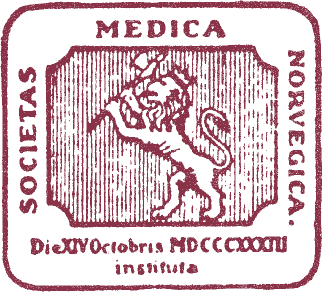Book review: Health as international politics
Hønneland G, Rowe L. Health as International Politics. Combating Communicable Diseases in the Baltic Sea Region. 119 pp. Aldershot: Ashgate, 2004.
Health as International Politics tells part of the story of one of the many Western initiatives to help countries in the former Soviet Union combat communicable diseases, in the present instance tuberculosis and HIV/AIDS, besides improving primary health care. The countries involved were Estonia, Latvia, Lithuania, Poland and Russia, and the initiative was properly named the Task Force on Communicable Disease Control in the Baltic Sea Region (the Task Force for short), launched by the Council of Baltic Sea States, of which Norway is a member. By coincidence, which is explained in the book, the initiative and the driving force happened to come from Norway, not least due to the efforts of Mr. Jonas Gahr Støre, who drew on his experience from the World Health Organization. The enterprise lasted from 2000 to 2004, with a final report to be presented at a meeting in June 2004. As the present book was written toward the end of 2003, the overall verdict has to be sought elsewhere, but the book still contains enough interesting observations and discussions to make reading it worth while. It does not give an overall view, as the authors Geir Hønneland and Lars Rowe of the Fridtjof Nansen Institute made up one of several evaluation teams. Their contribution is the so-called «contextual evaluation», or the sociological approach to the international relations inherent in the Task Force efforts.
Following an introductory chapter, the authors go on to describe the establishment and organisation of the Task Force, emphasising that its purpose Was not solely medical. but also an attempt to help «build up» the Baltic Sea region by promoting inter-regional collaboration, and not least to strengthen Norwegian foreign policy, which needs this kind of boost in its relative isolation outside the European Union. The Norwegian dominance in the Task Force turned out to be an impediment, as the collaborating partners and potential donors were reluctant to contribute substantially to what they perceived as a lopsided enterprise. Consequently, most of the money came from the Norwegian government. To obtain funding for each of the nearly 200 individual projects proved to be difficult. Another problem concerned with recruiting Task Force and local project collaborators from the target countries was the condition of mastering the English language, which precluded otherwise qualified persons.
The authors based their evaluation on interviews with 96 persons who were directly involved in Task Force establishment and activities, most of them from Russia and the three Baltic countries. The methodology is described as qualitative research. In the presentation, the identity of the individual interviewee is not revealed. In the chapters on Western versus post Soviet medicine and the Task force impact in the post-Soviet area, different opinions are voiced and in some instances quoted verbatim. This is the most interesting part of the book, the core example being how a new strategy for detection and treatment of tuberculosis was received and implemented. The acronym is DOTS, a WHO-inspired approach which stands for Directly Observed Treatment with Short-course chemotherapy. This requires increased effort on the part of the primary health care sector and a corresponding down-playing of the sanatorium philosophy with supplementary use of lung surgery, which is still the basic approach in Russia. Another clash of the cultures was apparent when the Task Force attempted to extend its strategy to prisons, where spread of serious contagious diseases is rife, but which is a world within a world, governed by its own rules and regulations. Why waste money on criminal outcasts when it can be spent on law-abiding citizens? The authors display the whole set of reactions, ranging from rejection-in-disguise to enthusiastic acceptance and willingness to collaborate. The latter was more noticeable in the Baltic Sea states, whereas the Russians had a more reserved attitude to Western attempts to change traditional systems. An overriding reaction was to view the problems addressed by the Task Force as an imposition.
Network building proved to be an unanimous success. Closer contact with people from other parts of the region led to exchange of ideas and expertise among medical communities with different traditions. Sustainability is another key word in this kind of activity. Will the efforts to change things remain, have a snowball effect, or will people and things revert to old traditions? Time will show, but since the Task Force was not the only outside enterprise of its kind, it will certainly be difficult to sort out cause and effect.
The authors confined themselves to evaluating the organisational aspects of the Task Force. I found the book interesting reading, but missed a description of single projects, if only confined to titles and number and origin of collaborators, which would have enriched the contents and understanding of what actually happened during the four years of Task Force existence. Four years is a short term for a multi-targeted programme embracing five countries, two of them with vast expansion and multiple regions. Any impact, however small, is to be congratulated.
Style and language are good. I presume that Health as International Politics will first and foremost appeal to political and social scientists plus historians. Among the medical community, it may interest those engaged in international health. Representatives of prospective donors, whether governments or non-governmental organisations, may avoid future mistakes by reading it.
Norwegian Institute of Public Health
Division of Epidemiology
P.O. Box 4404 Nydalen
NO-0403 Oslo
Norway
